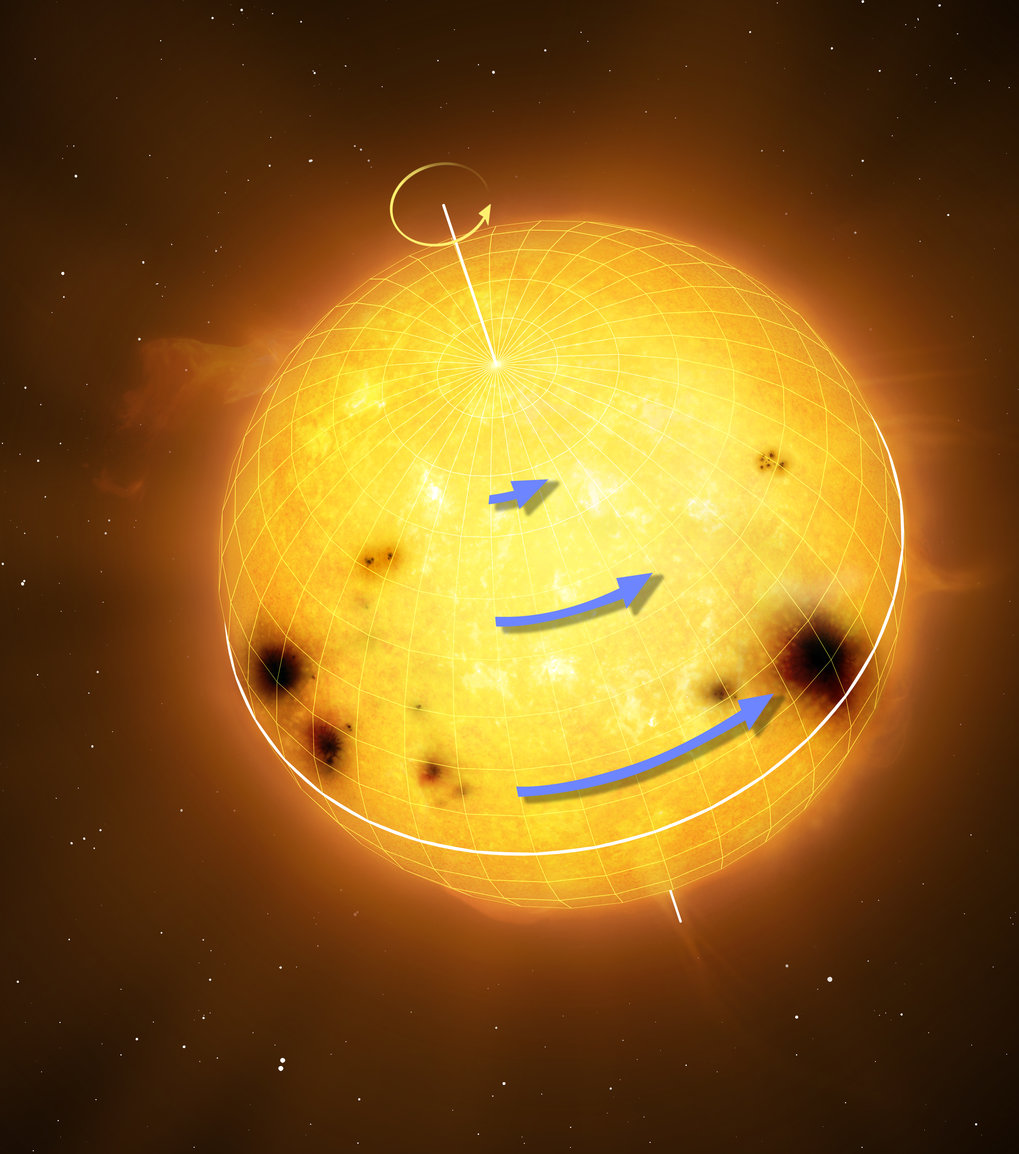Max Planck Institute for Solar System Research | 2018 Sep 20
Like our Sun, distant stars are rotating spheres of hot gas. Stars, however, do not rotate like solid spheres: regions at different latitudes rotate at different rates. Characterizing this rotation pattern is important as it is thought to be responsible for the generation of magnetic fields and starspots in stars. A group of researchers from New York University, the Max Planck Institute for Solar System Research (MPS) and the University of Göttingen in Germany has now measured the rotational patterns of a sample of Sun-like stars. They have identified 13 stars that rotate in a similar fashion as our Sun: their equators rotate faster than their mid latitudes. This rotation pattern is, however, much more pronounced than in the Sun: the stars’ equators are found to rotate up to twice as quickly as their mid-latitudes. This difference in rotation speed is much larger than theories had suggested. ...
What do we know about distant stars aside from their brightness and colors? Is our Sun a typical star? Or does it show certain properties that make it special, or maybe even unique? One property that is not fully understood is rotation. In its outer layers the Sun has a rotation pattern that scientists refer to as `latitudinal differential rotation’. This means that different latitudes rotate at different rates. While at the Sun’s equator one full rotation takes approximately 25 days, the higher latitudes rotate more slowly. Near the Sun’s poles, one full rotation takes approximately 31 days.
In their new work the scientists studied the rotation of 40 stars that resemble the Sun with respect to mass. Among those, the 13 stars for which differential rotation could be measured with confidence all show solar-like differential rotation: equators rotate faster than higher latitudes. In some cases, however, the difference in rotational speed between the equator and the mid-latitudes is much larger than in the Sun. ...
Asteroseismic Detection of Latitudinal Differential Rotation in 13 Sun-like Stars ~ O. Benomar et al
- Science 361(6408):1231 (21 Sep 2018) DOI: https://doi.org/10.1126/science.aao6571 ... ce.aao6571
